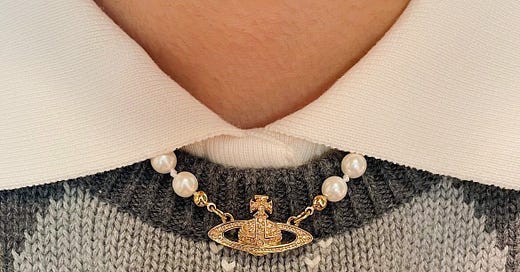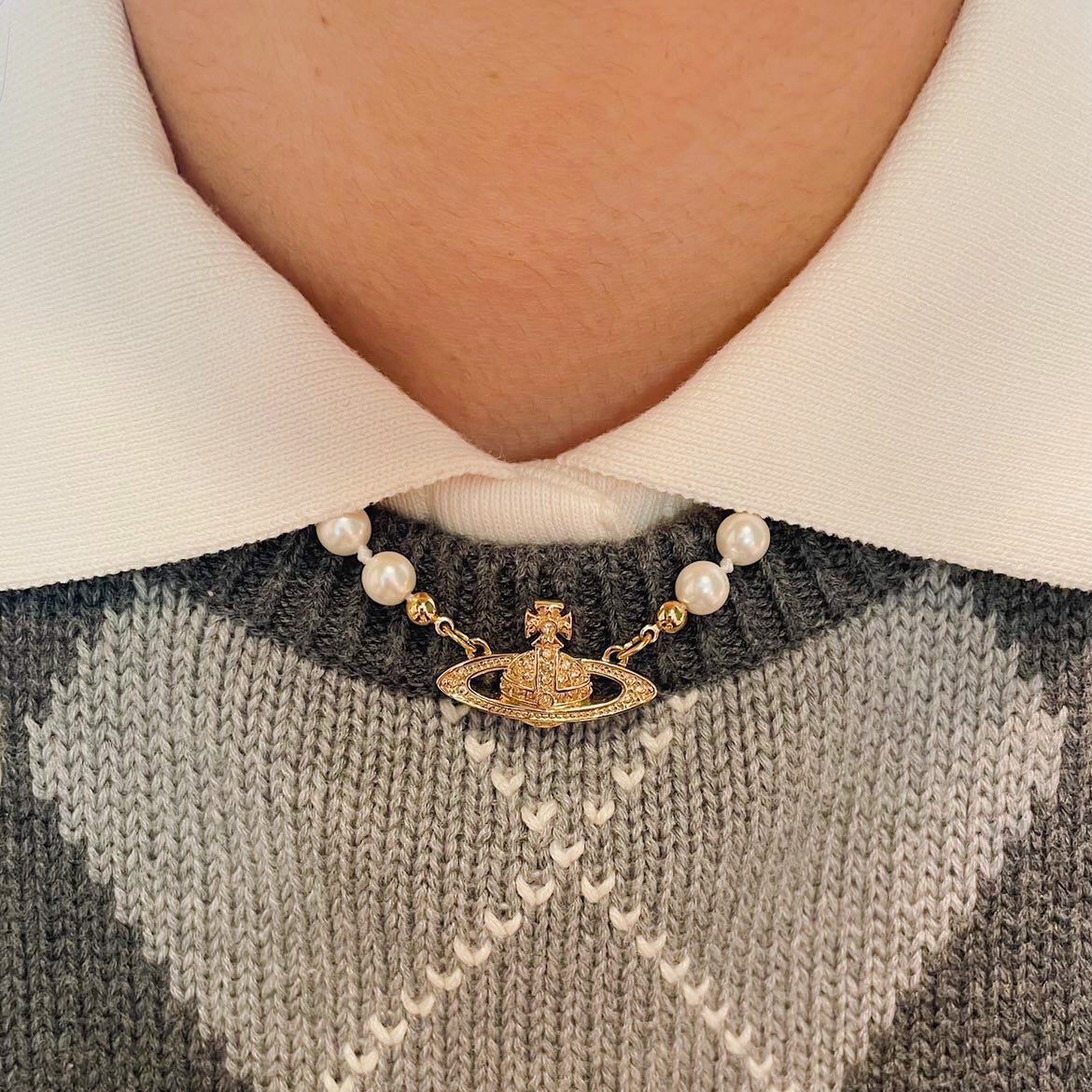The 1970s were 50 years ago. Sex, drugs, and rock and roll has taken a whole new look and meaning. Gone are the days of groupies, scandals, and anarchy. Pop stars are the new rock stars. Justin Bieber is this generation’s Mick Jagger. Yes, sex still sells but in a different way—in a bare-it-all way rather than a more-than-meets-the-eye way. Imitating the past is viewed as disingenuous and sometimes tacky (cue the Elvis impersonators). So why is Vivienne Westwood making a resurgence among Gen Z?
It seems as if everyone is wearing Vivienne Westwood these days, which is ironic considering that what started as a risqué response to the oppressiveness of mainstream society has become the mainstream itself. From Dua Lipa to various TikTokers, people are eager to sport Vivienne Westwood. Even my friends own a small piece of Vivienne Westwood’s history. Exhibit A: my friend Nina’s neck adorned with pearls and a tiny planet charm resembling Saturn for her 21st birthday celebration. Exhibit B: my friend Mindy complaining to me the other day about losing the earring back for one of her Vivienne Westwood earrings.
This question emerged while I was browsing the depths of Ebay for a vintage Vivienne Westwood bag. To my dismay, the bags sold on the Vivienne Weswtood website were well out of my price range. So, I resorted to Ebay to find something more reasonably priced. I found myself drawn to the multicolored tartan print bags from Westwood’s “Anglomania” era. The “Anglomania” era is known as some of Westwood's best work, fusing English and French influences by acknowledging the dialogue between British tailoring and French emphasis on proportions.
Vivienne Westwood is a household name in fashion. Her rise to global success started during the late 1970s, coinciding with the punk movement. Westwood and her partner at the time, Malcolm Mclaren, became the forefront of the punk movement, a counterculture that espoused all things rebellion. Westwood and her creations are best summed up by the term “Outsider aesthetic,” a term that encapsulates what it means to visually represent the “other.” Westwood and Mclaren entered the fashion industry in order to disrupt it. Their aptly named boutique SEX sold S&M-inspired clothing that only a select few could wear on the streets. It makes sense that Westwood’s contribution to the punk movement defined the look of rebellious youth. Her creations were one of the first instances in which “otherness” was rewarded in the fashion industry.
The youth with their full-fledged angst want to question the norms and rebel, a natural reaction against authority and a part of an ongoing cycle that appears every generation. Just look at TikTok and Instagram, where the shock factor is rewarded. Likes and views rely on how viral something can be, on how different and provoking something is. This could be why Vivienne Westwood resonates with the current generation. Her designs appeal to the ever-questioning and defiant youth.
Westwood’s mission has become repurposed and recycled over the years, losing what made the brand special in the first place. Westwood recently released a statement condemning capitalism, which slightly misses the mark. Sure, Westwood the person calls for a change to the social order, but her offspring—Vivienne Westwood—is another contributor to the problem that the designer criticizes. At the end of the day, Vivienne Westwood is a business designed to make profit.
When Westwood first started making clothes in the 70s, her designs were used to unsettle the mainstream. Now, Westwood’s namesake label is much more tame and marketable. I don’t think that Vivienne Westwood’s shift is an earth-shattering phenomenon. Brands often shift direction to accommodate the changes that come with each generation.
The Vivienne Westwood of today is catered for people who don’t necessarily identify with the brand’s ethos but want to partake in a piece of revolutionary fashion history. In my case, I wanted to pay homage to a fashion icon, and though it might be hard for me to admit, earn a bit of clout with my peers. To own Vivienne Westwood is to be cognizant of Westwood’s contribution to culture. Whether it’s a tiny orb hanging around your neck or dangling from your ears, you know Vivienne Westwood when you see it, which is why the brand and Ms. Westwood herself remain relevant to this day.




